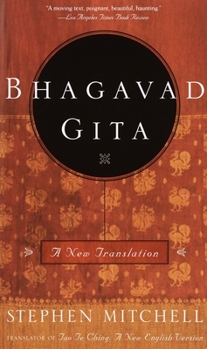Bhagavad Gita: A New Translation
Select Format
Select Condition 
Book Overview
Stephen Mitchell is widely known for his ability to make ancient masterpieces thrillingly new, to step in where many have tried before and create versions that are definitive for our time. His celebrated version of the Tao Te Ching is the most popular edition in print, and his translations of Jesus, Rilke, Genesis, and Job have won the hearts of readers and critics alike. Stephen Mitchell now brings to the Bhagavad Gita his gift for breathing new...
Customer Reviews
Wrong translation was shipped
One of the best books in the world.
Bhagavad-Gita
The esteemed, poetic classic translation in a pocket edition
One of the more attractive versions for the general reader.
Most lyrical translation into English of this classic
The Bhagavad Gita Mentions in Our Blog

Featuring a glittering, star-studded cast, Christopher Nolan's brilliant new film charts the turbulent life of J. Robert Oppenheimer, the theoretical physicist who played a significant role in developing the first atomic bombs. If you enjoyed the movie, here's your chance to learn more about this fascinating chapter from history.







